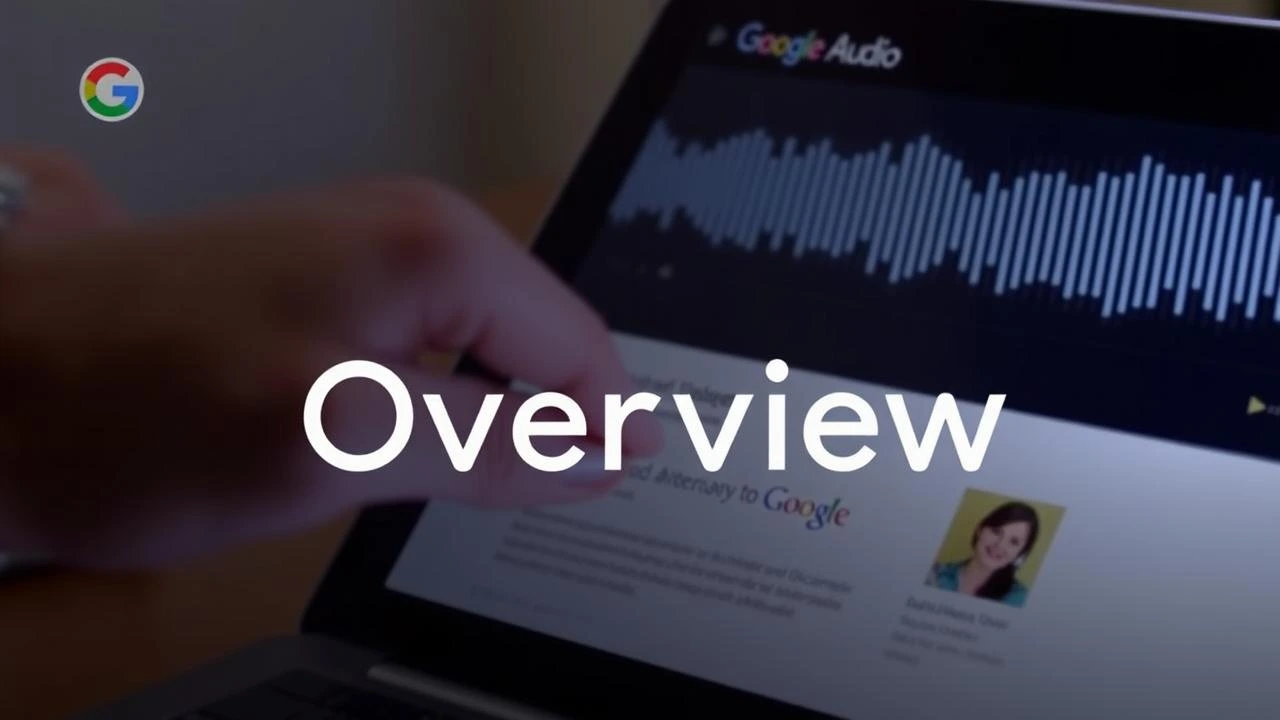In an age dominated by digital content, the way information is consumed is rapidly evolving. Documents that once sat idly on screens or printed pages can now be transformed into dynamic audio experiences. Google’s new Audio Overview feature emerges as a revolutionary tool that converts mundane text documents into engaging podcasts, providing a much-needed solution for modern readers and learners.
The Rise of Audio Content
The digital landscape has seen a significant shift toward audio formats. According to the 2021 Infinite Dial report, over 50% of the U.S. population aged 12 and older listens to podcasts. As more people prefer to consume content while multitasking—whether commuting, exercising, or managing household chores—Google’s Audio Overview is positioned to tap into this trend effectively.
What is Google’s Audio Overview?
Google’s Audio Overview is an advanced feature that employs artificial intelligence and natural language processing to convert written documents into auditory formats. The tool is particularly beneficial for professionals who find traditional reading tedious, businesses seeking to reach wider audiences, and individuals who simply prefer listening over reading.
Key Features of Google’s Audio Overview
- Text-to-Speech Conversion: The primary function transforms written documents into lifelike audio using advanced speech synthesis technology.
- Customization Options: Users can select different voices, speed settings, and even specific accents to create a personalized listening experience.
- Accessibility: It is designed to enhance accessibility for those with visual impairments or reading difficulties.
- Multi-format Support: Audio Overview supports various document types including PDFs, Word files, and Google Docs, making it a versatile tool for diverse users.
The Benefits of Audio Overview
The introduction of Google’s Audio Overview comes with several notable advantages:
- Increased Engagement: Audio format tends to hold attention longer than text, making it an effective medium to convey information.
- Multitasking Opportunities: Users can digest content while engaging in other activities, optimizing time management.
- Enhanced Retention: Studies show that auditory learning can improve information retention among listeners.
- Broader Reach: Businesses and educators can reach audiences who might not have the time or inclination to read lengthy documents.
How to Use Google’s Audio Overview
Utilizing the Audio Overview feature is straightforward, fostering user-friendly interactions. Here’s a simplified guide to get started:
- Access Your Document: Open the document you wish to convert in Google Drive or Google Docs.
- Activate Audio Overview: Click on the Audio Overview button in the toolbar (typically presented as a speaker icon).
- Select Preferences: Choose your preferred voice, speed, and any other settings that suit your needs.
- Listen or Download: Start listening directly, or download the audio file for offline use.
Table: Comparison of Traditional Reading vs. Audio Overview
| Aspect | Traditional Reading | Audio Overview |
|---|---|---|
| Engagement | Varies by reader | Highly engaging |
| Multitasking | Difficult to do | Easily allows for multitasking |
| Accessibility | Limited for visually impaired | Better accessibility |
| Learning Retention | Depends on reading style | Generally higher retention |
| Preference | Cognitive load can be high | Relieves cognitive burden |
“The human mind is constantly seeking efficiency; audio content is a testament to our desire to consume information while on the go.” – unnamed industry expert
Future Implications of Audio Overview
The impact of Google’s Audio Overview extends beyond personal usage. Businesses and educational institutions can leverage this feature to enhance communication and learning experiences. Some ways in which its implementation could expand include:
- Corporate Training: Transforming training manuals into audio formats for easier employee onboarding.
- Educational Materials: Schools and universities may use it to create accessible learning resources for students.
- Content Marketing: Marketers can convert blog posts and articles into podcasts to reach wider audiences.
Frequently Asked Questions (FAQs)
1. Is Audio Overview available across all devices?
Yes, Audio Overview can be accessed through any device that supports Google Docs or Drive, including smartphones, tablets, and desktops.
2. Can I adjust the reading speed?
Absolutely! Users can customize the reading speed according to their preferences for an optimal listening experience.
3. Are there any costs associated with using Audio Overview?
Currently, Audio Overview is available for free to users of Google’s suite of products, although there may be costs for advanced features in the future.
4. How does Audio Overview handle complex documents?
Google’s AI technology is designed to interpret and convert any type of document, regardless of complexity, making it useful for a variety of materials from research papers to company reports.
5. Can I share the audio output?
Yes, the audio files created can be shared with others just like any other file, enabling wider dissemination of information.
Conclusion
As society continues to evolve and adapt to new ways of processing information, Google’s Audio Overview represents a significant leap forward in making content more accessible and engaging. By transforming traditional documents into podcasts, it empowers users to consume information dynamically and efficiently. As adoption increases, the promise of Audio Overview could redefine how individuals and businesses communicate, learn, and connect in a fast-paced digital world.
In a world overflowing with content, making information more digestible and enjoyable can only serve to enhance our collective understanding and knowledge. Embracing tools like Google’s Audio Overview will be crucial for anyone looking to thrive in this new digital frontier.






